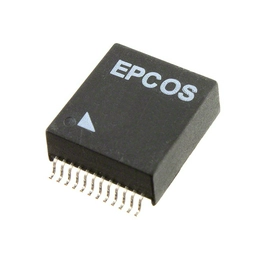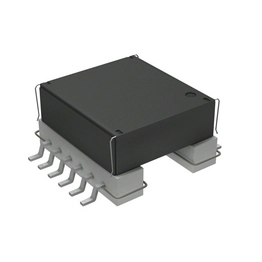Audio Transformers
Results:Audio Transformers Results:
Comprehensive
Price Priority
Stock Priority
Image
Part Number
Manufacturer
Description
Availability
Unit Price
Quantity
Operation

TDK
1CT:1CT LAN 10/100/1000 Base-T 1Ω(CT) -10dB@ 100MHz 100KHz SMD mount 13.8mm*15.2mm*5.75mm
Quantity: 258
Ship Date: 3-12 working days
1+ $3.02
10+ $2.7059
50+ $2.7059
100+ $2.6576
200+ $2.6576
400+ $2.6576
-
+
Ext. Price: $12.08
MOQ: 4
Mult: 1

TDK
IC, RF Isolator, 2110-2170MHz, RH (CW) Rotation, 4X4
Quantity: 2000
Ship Date: 8-18 working days
20+
100+ $4.5492
500+ $4.17
1000+ $3.7908
5000+ $3.4116
10000+ $3.0324
-
+
Ext. Price: $500.41
MOQ: 110
Mult: 1
SPQ: 1

TDK
323Ω 8.9Ω 500V SMD mount 18.1mm*16mm*9mm
Quantity: 0
Ship Date: 7-12 working days
-
+
Ext. Price:
MOQ: 1
Mult: 1
SPQ: 1

TDK
285Ω 7.9Ω SMD mount 22mm*21.6mm*12mm
Quantity: 0
Ship Date: 7-12 working days
-
+
Ext. Price:
MOQ: 1
Mult: 1
SPQ: 1

TDK
188Ω 5.2Ω 500V 10KHz SMD mount 22mm*21.6mm*12mm
Quantity: 0
Ship Date: 7-12 working days
-
+
Ext. Price:
MOQ: 1
Mult: 1
SPQ: 1

TDK
285Ω 7.9Ω SMD mount 22mm*21.6mm*12mm
Quantity: 0
Ship Date: 7-12 working days
-
+
Ext. Price:
MOQ: 1
Mult: 1
SPQ: 1

TDK
1:1 -16dB 1.5KV SMD mount 27.81mm*12.19mm*7.24mm
Quantity: 0
Ship Date: 9-11 working days
300+ $3.6176
-
+
Ext. Price: $1085.28
MOQ: 300
Mult: 300
SPQ: 300

TDK
323Ω 8.9Ω 500V SMD mount 18.1mm*16mm*9mm
Quantity: 0
Ship Date: 7-12 working days
-
+
Ext. Price:
MOQ: 1
Mult: 1
SPQ: 1

TDK
1:1:1:1:1:1 Multi Winding Transformer 466mΩ(Typ),12.9mΩ(Typ) 466mΩ(Typ),12.9mΩ(Typ) 500V 10KHz SMD mount 18.1mm*16mm*9mm
Quantity: 0
Ship Date: 7-12 working days
-
+
Ext. Price:
MOQ: 1
Mult: 1
SPQ: 1

TDK
188Ω 5.2Ω SMD mount 22mm*21.6mm*12mm
Quantity: 0
Ship Date: 7-12 working days
-
+
Ext. Price:
MOQ: 1
Mult: 1
SPQ: 1

TDK
285Ω 7.9Ω 500V SMD mount 22mm*21.6mm*12mm
Quantity: 0
Ship Date: 7-12 working days
-
+
Ext. Price:
MOQ: 1
Mult: 1
SPQ: 1

TDK
323Ω 8.9Ω 500V SMD mount 18.1mm*16mm*9mm
Quantity: 0
Ship Date: 7-12 working days
-
+
Ext. Price:
MOQ: 1
Mult: 1
SPQ: 1

TDK
466Ω 12.9Ω 500V SMD mount 18.1mm*16mm*9mm
Quantity: 0
Ship Date: 7-12 working days
-
+
Ext. Price:
MOQ: 1
Mult: 1
SPQ: 1

TDK
188Ω 5.2Ω 22mm(length)*12mm(height)
Quantity: 0
Ship Date: 7-12 working days
-
+
Ext. Price:
MOQ: 1
Mult: 1
SPQ: 1

TDK
285Ω 7.9Ω SMD mount 22mm*21.6mm*12mm
Quantity: 0
Ship Date: 7-12 working days
-
+
Ext. Price:
MOQ: 1
Mult: 1
SPQ: 1












